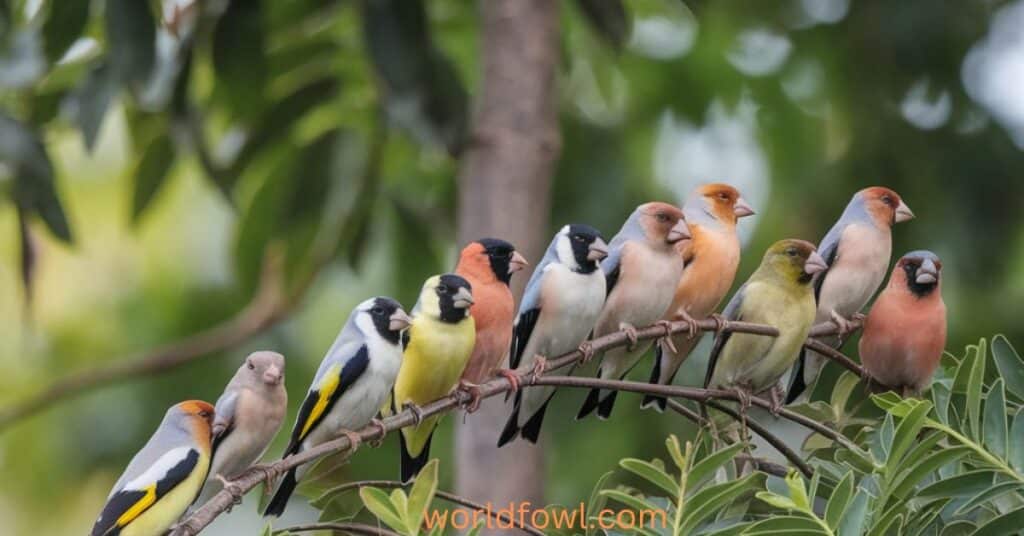Introduction
Ohio’s diverse ecosystem is home to a captivating array of finches, enchanting birdwatchers and nature enthusiasts alike. These small, vibrant songbirds add a splash of color and melody to the Buckeye State’s landscapes, from urban backyards to expansive forests. In this comprehensive guide, we’ll explore the world of Finches In Ohio, delving into the characteristics, behaviors, and habitats of nine remarkable species that call this state home, either year-round or as seasonal visitors.
Understanding Finches In Ohio
Before we dive into the specific species of finches in Ohio, let’s take a moment to understand what makes a finch a finch. These small passerine birds belong to the family Fringillidae and are characterized by their conical beaks, which are perfectly adapted for cracking seeds. Finches are known for their melodious songs, social behavior, and in many cases, their vibrant plumage.
Finches in Ohio can be found in a variety of habitats, including:
- Deciduous forests
- Coniferous woodlands
- Urban and suburban areas
- Fields and meadows
- Wetlands and riparian zones
The presence of these birds often varies with the seasons. While some species are year-round residents, others are winter visitors or migrants passing through during spring and fall. Understanding these patterns can greatly enhance your birdwatching experience in Ohio.
9 Finches In Ohio You’ll Find
American Goldfinch (Spinus tristis)
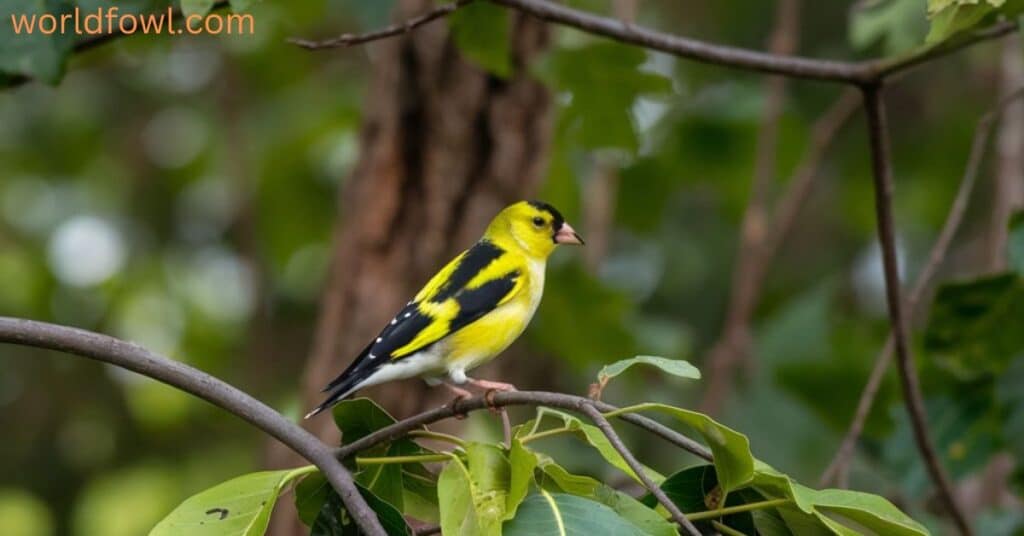
The American Goldfinch is perhaps the most recognizable of all finches in Ohio. This bright yellow bird with black wings and a black cap is a common sight at bird feeders across the state.
Identification features:
- Male breeding plumage: Bright yellow body with black wings and cap
- Female and winter plumage: Olive-brown with duller yellow underparts
- Both sexes have white wing bars and a conical, pale bill
Habitat and behavior:
American Goldfinches prefer open areas with scattered trees and shrubs. They’re often found in:
- Gardens
- Parks
- Roadsides
- Weedy fields
These social birds are frequently seen in flocks, especially during the non-breeding season. Their undulating flight pattern and cheerful “po-ta-to-chip” call make them easy to spot and identify.
Seasonal changes:
One of the fascinating aspects of the American Goldfinch is its dramatic seasonal plumage change. Males molt twice a year, transforming from their dull winter colors to the brilliant yellow of breeding season.
Feeding habits:
American Goldfinches are almost exclusively seed eaters. Their favorite foods include:
- Thistle seeds
- Sunflower seeds
- Nyjer seeds
To attract them to your yard, consider planting native plants like coneflowers, sunflowers, and asters.
you may also like : Finches In Texas – The Complete Guide To Texas Finches
House Finch (Haemorhous mexicanus)
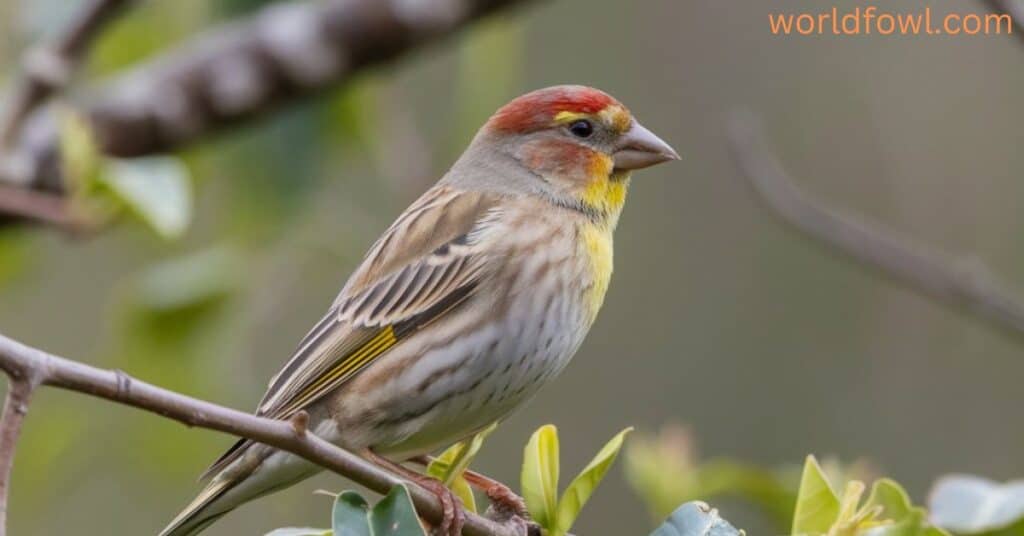
The House Finch is another common sight in Ohio’s backyard birds scene. Originally native to the western United States, these adaptable birds have successfully colonized the eastern part of the country, including Ohio.
Distinguishing marks:
- Males: Rosy red head, breast, and rump
- Females: Brown streaked bodies
- Both sexes have notched tails and thick, curved bills
Urban adaptation:
House Finches have thrived in urban and suburban environments across Ohio. They’re commonly found:
- At backyard feeders
- In parks and gardens
- On building ledges and eaves
Their success in urban areas is largely due to their adaptability and tolerance for human presence.
Nesting habits:
House Finches build cup-shaped nests in a variety of locations, including:
- Hanging planters
- Tree branches
- Building crevices
They typically lay 3-6 pale blue eggs with small dark spots.
Health issues:
Unfortunately, House Finches are susceptible to a form of conjunctivitis caused by the bacterium Mycoplasma gallisepticum. This condition can cause swollen, crusty eyes and even blindness. To help prevent the spread of this disease:
- Clean your bird feeders regularly
- Spread out multiple feeding stations to reduce crowding
Purple Finch (Haemorhous purpureus)
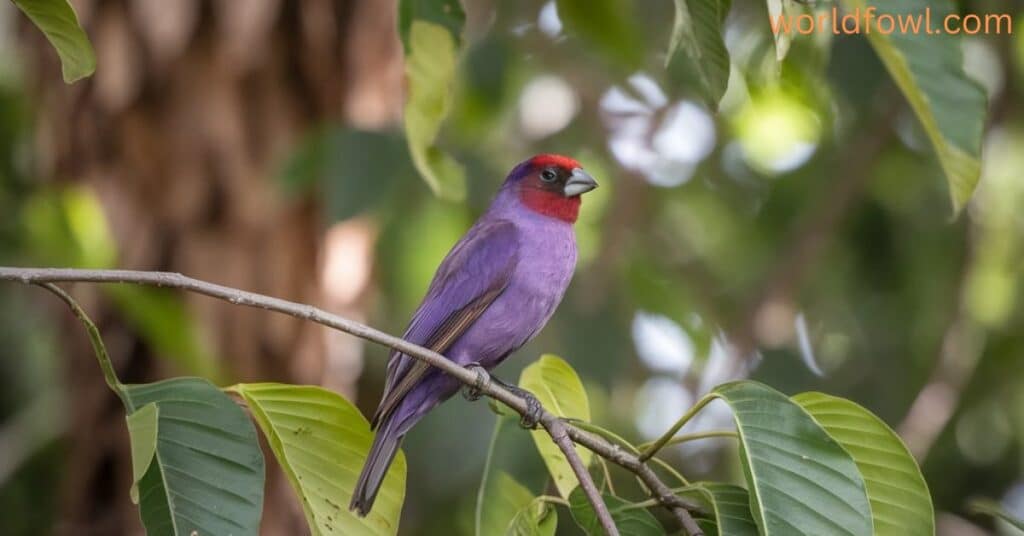
The Purple Finch is often confused with the House Finch, but careful observation reveals distinct differences. These birds are less common in Ohio than their House Finch cousins and are more often seen during winter months.
Identification tips:
- Males: Raspberry red coloration on head and breast, extending to the back
- Females: Brown streaked bodies with a distinctive white eyebrow stripe
- Both sexes have a notched tail and a larger, more curved bill compared to the House Finch
Habitat preferences:
Purple Finches in Ohio are typically found in:
- Coniferous and mixed forests
- Forest edges
- Orchards
- Occasionally at backyard feeders during winter
Vocalizations:
Purple Finches have a rich, warbling song that is more musical and varied than that of the House Finch. Their call note is a sharp “pik” sound.
Population trends:
Purple Finch populations have been declining in recent years, possibly due to competition with House Finches. Providing diverse food sources and maintaining native habitats can help support these beautiful birds.
you may also like : 24 Yellow Birds In Ohio With Photos
Common Redpoll (Acanthis flammea)
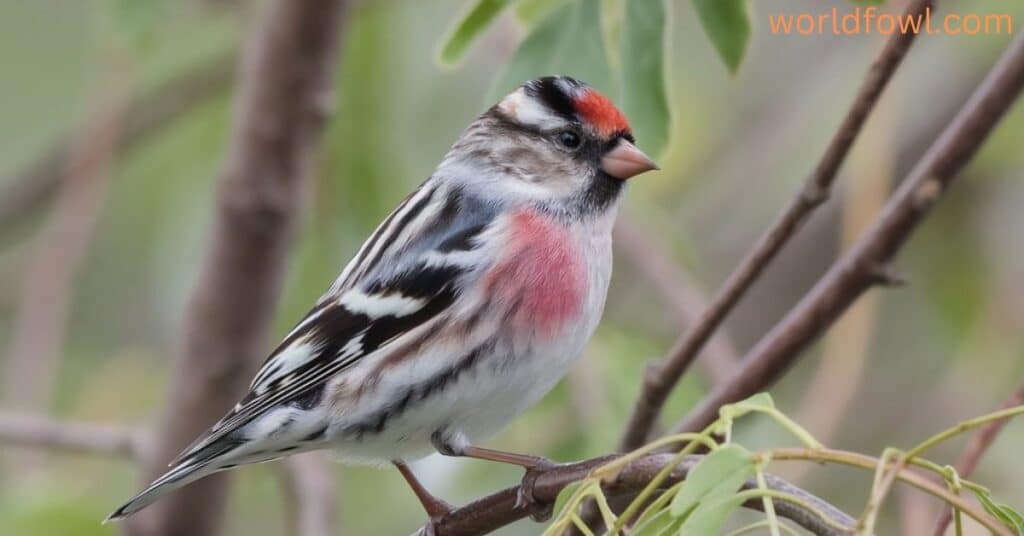
The Common Redpoll is an arctic finch that occasionally visits Ohio during winter months, particularly during irruption years when food is scarce in their northern breeding grounds.
Identification features:
- Small finch with streaked brown body
- Red cap on forehead
- Black chin
- Males have pink wash on chest and rump
Winter irruptions:
Redpolls are irregular winter visitors to Ohio. Their presence depends on food availability in their breeding range. During irruption years, large flocks may descend on Ohio, providing exciting opportunities for birdwatchers.
Feeding behavior:
Common Redpolls are acrobatic feeders, often hanging upside down to reach seeds. They prefer:
- Birch seeds
- Alder seeds
- Nyjer seeds at feeders
Cold weather adaptations:
These hardy birds have several adaptations for surviving harsh winters:
- Dense plumage for insulation
- Ability to store seeds in an expandable esophagus pouch
- Can tunnel into snow for shelter
Pine Siskin (Spinus pinus)
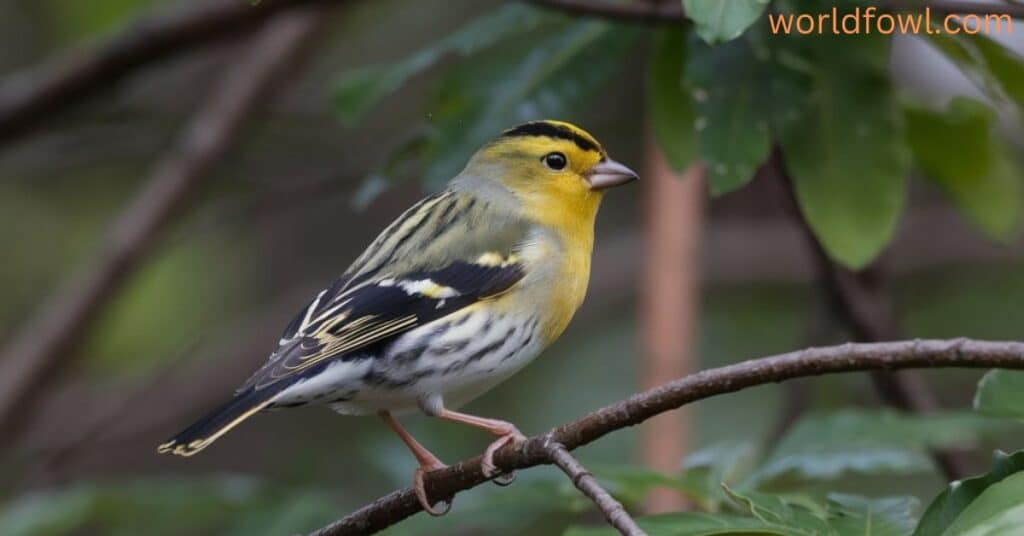
The Pine Siskin is another irruptive species that may visit Ohio during winter months. These small, streaky finches are often overlooked due to their subtle coloration.
Field marks:
- Heavily streaked brown body
- Yellow edges on wings and tail
- Thin, pointed bill
- Notched tail
Nomadic behavior:
Pine Siskins are known for their erratic movements, which are largely driven by food availability. They may be abundant in Ohio one winter and absent the next.
Habitat preferences:
When in Ohio, Pine Siskins can be found in:
- Coniferous forests
- Mixed woodlands
- Backyard feeders offering nyjer or sunflower seeds
Flocking behavior:
Pine Siskins are highly social and often form large, noisy flocks. They may mix with other finch species, particularly American Goldfinches.
Evening Grosbeak (Coccothraustes vespertinus)
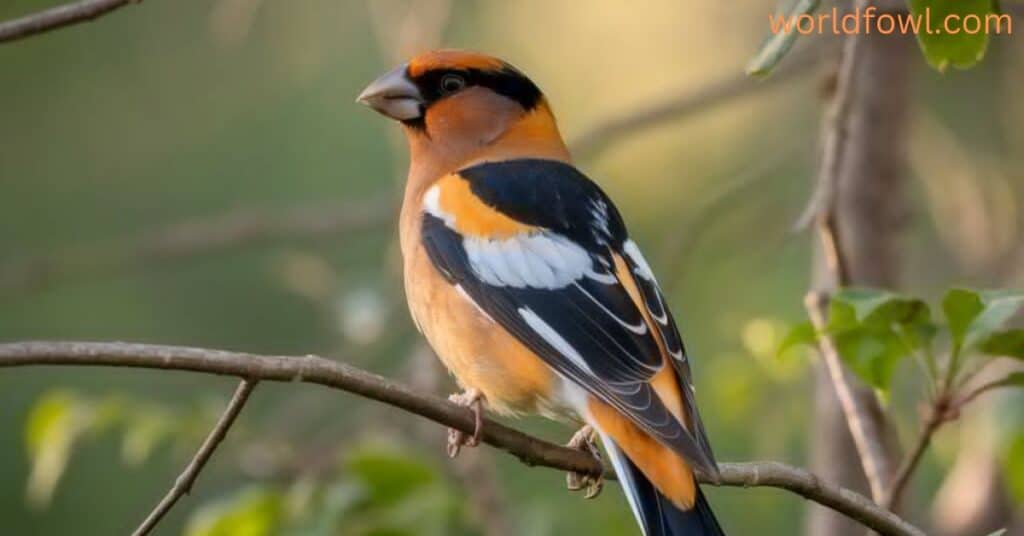
The Evening Grosbeak is a striking finch that occasionally visits Ohio during winter months. These large, colorful birds are always a treat for birdwatchers.
Distinctive appearance:
- Males: Yellow body with black wings and tail, black crown, and prominent white wing patch
- Females: Grayish-brown body with black and white wings
- Both sexes have a large, pale bill
Historical presence:
Evening Grosbeaks were once more common winter visitors to Ohio, but their numbers have declined in recent decades.
Population concerns:
Factors contributing to Evening Grosbeak decline include:
- Habitat loss in breeding areas
- Climate change affecting food availability
- Possible impacts of pesticide use on insect prey
Attracting Evening Grosbeaks:
To increase your chances of hosting these beautiful birds:
- Offer sunflower seeds in platform feeders
- Maintain native fruit-bearing trees and shrubs
- Keep feeders well-stocked during winter months
you may also like : Finches in North Carolina – The Complete Guide
Red Crossbill (Loxia curvirostra)
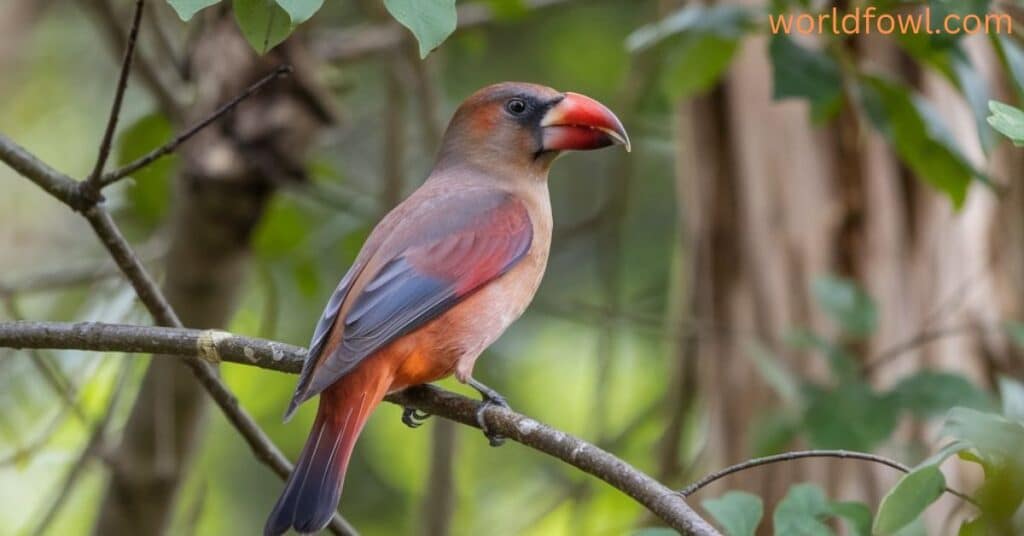
The Red Crossbill is a specialized finch with a unique bill adaptation that allows it to extract seeds from conifer cones. These birds are irregular visitors to Ohio, typically appearing during winter months.
Unique bill adaptation:
- Upper and lower mandibles cross at the tips
- Allows them to pry open conifer cones and extract seeds
Identification:
- Males: Brick-red body with darker wings
- Females: Yellowish-olive body with darker wings
- Both sexes have heavy bills and forked tails
Conifer seed specialization:
Red Crossbills are highly dependent on conifer seeds, particularly:
- Spruce
- Pine
- Hemlock
Their movements are largely dictated by cone crop abundance.
Types and vocalizations:
Red Crossbills are divided into several “types” based on subtle differences in bill size and vocalizations. These types are adapted to feed on specific conifer species.
White-winged Crossbill (Loxia leucoptera)
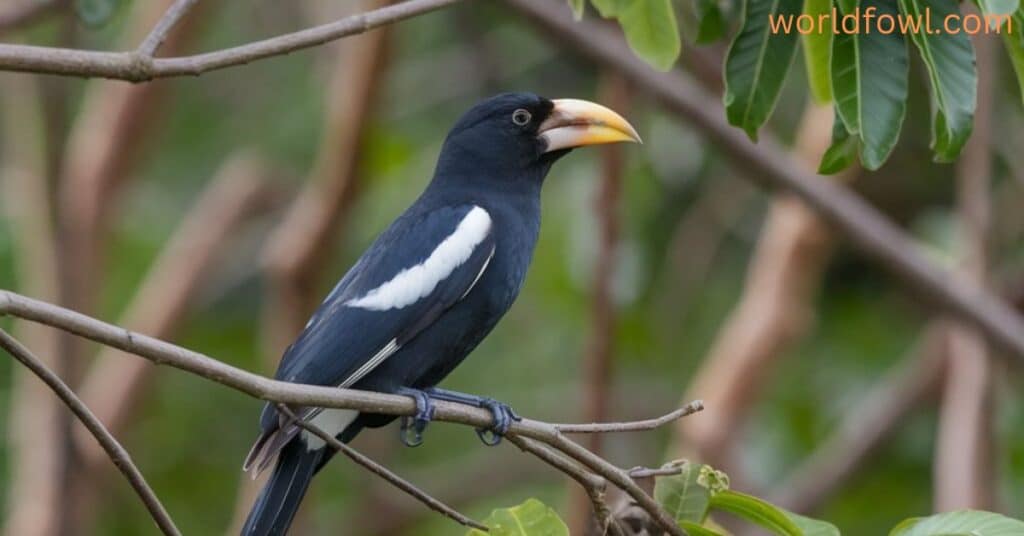
The White-winged Crossbill is closely related to the Red Crossbill but is generally rarer in Ohio. Like its cousin, it has a specialized bill for extracting conifer seeds.
Identification features:
- Males: Rosy-pink body with black wings and tail
- Females: Yellowish body with dark wings and tail
- Both sexes have prominent white wing bars, distinguishing them from Red Crossbills
Comparison to Red Crossbill:
- Slightly smaller overall
- Bill is typically smaller and less robust
- Presence of white wing bars
Irruptive patterns:
White-winged Crossbills are highly nomadic and may appear in Ohio during years when their preferred food sources are scarce in their usual range.
Preferred tree species:
While they feed on various conifers, White-winged Crossbills show a strong preference for:
- Spruce
- Tamarack
- Hemlock
Hoary Redpoll (Acanthis hornemanni)
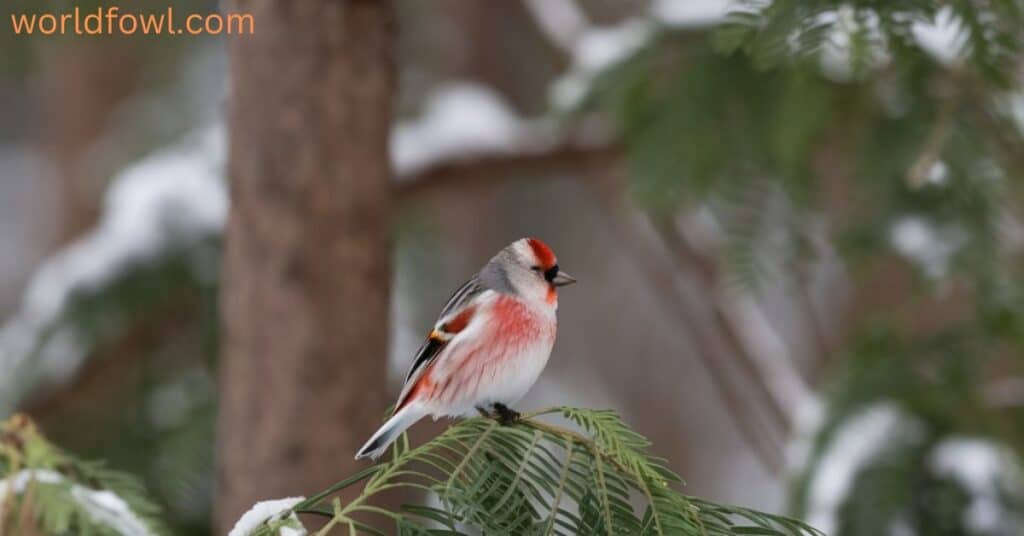
The Hoary Redpoll is a rare winter visitor to Ohio, often mixed in with flocks of Common Redpolls. These pale finches breed in the high Arctic and only occasionally venture as far south as Ohio.
Distinguishing from Common Redpoll:
- Overall paler, “frosty” appearance
- Less streaking on sides and rump
- Smaller bill with a more concave culmen (top ridge of bill)
Rarity in Ohio:
Hoary Redpolls are considered rare but regular winter visitors to Ohio. Their presence often causes excitement among birdwatchers due to their scarcity.
Arctic breeding grounds:
Hoary Redpolls breed in some of the northernmost land areas on Earth, including:
- Northern Alaska
- Canadian Arctic Archipelago
- Greenland
Feeding behavior:
When visiting Ohio, Hoary Redpolls can be found:
- Feeding on birch and alder seeds
- Visiting nyjer seed feeders
- Foraging in weedy fields
You may also like : Types of Loons – The 5 Loons Types With Photos
Conservation and Helping Ohio’s Finches
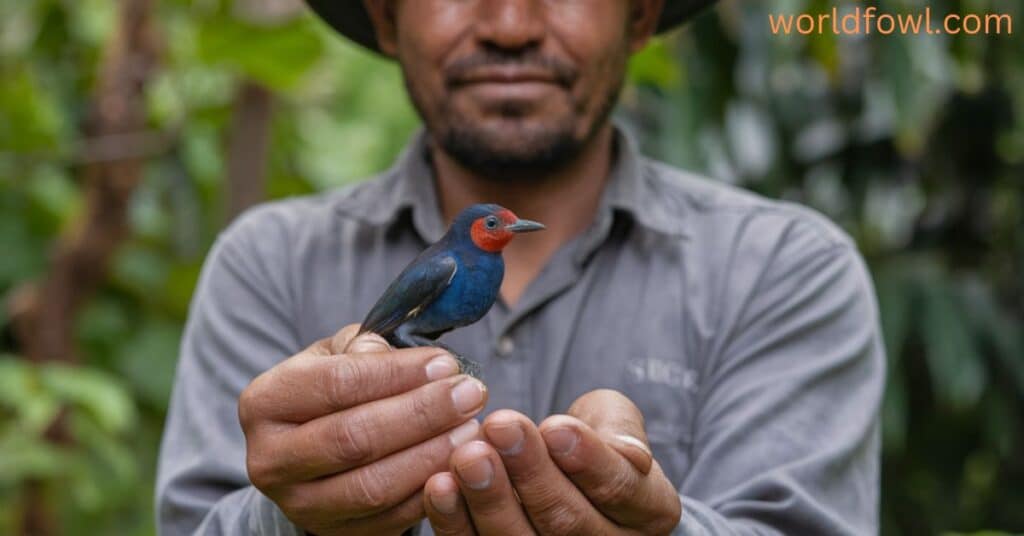
As we appreciate the beauty and diversity of finches in Ohio, it’s crucial to consider their conservation needs. Many finch species face challenges due to habitat loss, climate change, and other human activities.
Habitat preservation efforts:
- Support local conservation organizations working to protect bird habitats
- Advocate for the preservation of natural areas in your community
- Plant native trees and shrubs that provide food and shelter for finches
Climate change impacts:
Climate change is affecting finch populations in various ways:
- Altering food availability and timing
- Shifting breeding ranges
- Changing migration patterns
To help mitigate these impacts:
- Reduce your carbon footprint
- Support policies that address climate change
- Participate in citizen science projects that track bird populations
Creating a finch-friendly backyard:
You can support finches in Ohio by making your yard more hospitable:
- Offer a variety of seeds in different feeder types
- Provide fresh water for drinking and bathing
- Plant native plants that produce seeds or attract insects
- Avoid using pesticides that can harm birds or their food sources
Best Spots for Finch Watching in Ohio
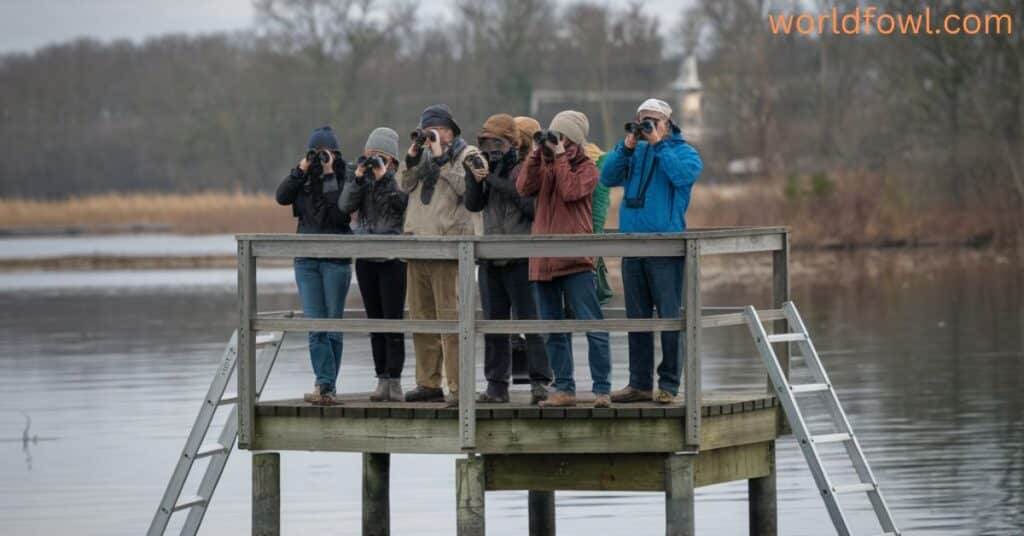
Ohio offers numerous excellent locations for observing finches in Ohio. Here are some top spots to consider:
State parks and nature preserves:
- Mohican State Park
- Hocking Hills State Park
- Cuyahoga Valley National Park
- Magee Marsh Wildlife Area
Urban parks and green spaces:
- Scioto Audubon Metro Park (Columbus)
- Mentor Marsh State Nature Preserve
- Cincinnati Nature Center
Backyard birding tips:
- Maintain a variety of feeder types (tube feeders, platform feeders, nyjer socks)
- Offer different seed types to attract diverse species
- Keep feeders clean and well-stocked
- Provide natural food sources through native plantings
Seasonal hotspots:
- Lake Erie shoreline during spring and fall migration
- Coniferous forests in northeastern Ohio for winter finches
- Agricultural areas in western Ohio for open country species
Photography Tips for Capturing Ohio’s Finches
Photographing finches in Ohio can be a rewarding experience. Here are some tips to help you capture stunning images:
Equipment recommendations:
- A camera with good autofocus capabilities
- A telephoto lens (300mm or longer)
- A sturdy tripod or monopod
Techniques for sharp images:
- Use a fast shutter speed (1/1000 sec or faster) to freeze motion
- Increase ISO in low light conditions
- Focus on the bird’s eye for maximum impact
- Use burst mode to capture birds in flight
Ethical considerations:
- Maintain a respectful distance from birds
- Avoid using recordings or other methods to attract birds excessively
- Never disturb nesting sites
- Follow local regulations and guidelines in protected areas
Conclusion : Finches In Ohio
The world of finches in Ohio is diverse, colorful, and endlessly fascinating. From the cheerful American Goldfinch to the elusive Hoary Redpoll, these small songbirds offer birdwatchers and nature enthusiasts a wealth of opportunities for observation and appreciation.
By understanding the unique characteristics, behaviors, and needs of Ohio’s finch species, we can better appreciate their role in our ecosystems and take steps to ensure their conservation. Whether you’re setting up a backyard feeder, participating in citizen science projects, or venturing out to Ohio’s parks and preserves, the study of finches offers a rewarding connection to the natural world.
We encourage you to explore the world of finches in Ohio, contribute to their conservation, and share your observations and experiences with others. Every backyard birdwatcher, casual observer, and dedicated ornithologist plays a crucial role in protecting these beautiful birds for future generations to enjoy.

Henry James is a seasoned blogger and a passionate storyteller on “World Fowl.” With years of experience crafting engaging content, he brings a unique blend of expertise and creativity to his writing. Henry specializes in exploring diverse topics with depth and clarity, captivating readers worldwide.

